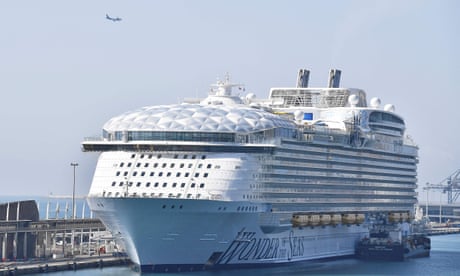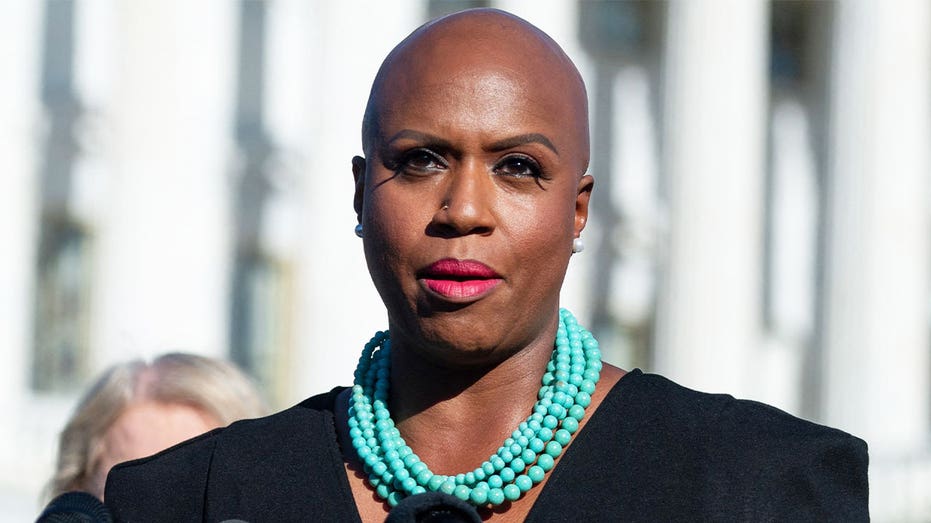- by foxnews
- 25 Nov 2024
‘A plague of locusts’: Barcelona battles port authorities to curb cruise tourists
‘A plague of locusts’: Barcelona battles port authorities to curb cruise tourists
- by theguardian
- 10 Apr 2023
- in news

The ships, at times dwarfing the average apartment building, begin lumbering into Barcelona while much of the city is still asleep. Stretching as long as five buses, some come to embark or disembark passengers, while others disgorge thousands of daytrippers keen to glimpse the city's modernist architecture and stroll the narrow streets of the gothic quarter.
It's a scene that plays out daily in Barcelona - much to the chagrin of some local officials. Last Monday, five cruise ships were slated to arrive; this Friday, on 14 April, eight are expected.
As the pace of arrivals picks up in this city of 1.7 million residents, the municipality is fighting back, in hopes of tempering Barcelona's status as one of the world's most popular cruise destinations.
The city has long waged battle over the number of cruise ship tourists arriving in the city which, in 2019, hit a record high of just over 3.1 million. Their efforts, however, have been consistently stymied by their lack of jurisdiction over the port.
This time around - as Sanz noted in a recent letter to the regional government - there are more reasons than ever for the region to flex its power over the port and curb arrivals, from the record-breaking number of passengers expected this year, to the precedent-setting limits put in place for Palma in Mallorca, the largest port in Spain's Balearic islands.
The region is also wrestling with its worst drought in decades, forcing water restrictions and a scramble to clear up to 1.5 tonnes of fish a day from a rapidly dwindling reservoir. "It is completely incomprehensible that we're suffering our driest year in 100 years but expecting more cruise passengers than ever," said Sanz.
What the city wants is to see cruise ship arrivals capped at 200,000 passengers per month, or a maximum of three ships a day. Until that happens, residents would be forced to scrimmage for space with some 25,000 daytrippers clamouring to see the city's most emblematic sites, said Sanz.
Tensions have at times flared over the issue; in 2019 Gala Pin, a city councillor at the time, told Catalan newspaper Ara that she was personally in favour of abolishing cruise ship tourism altogether. "It's a plague of locusts [type of] tourism; they devour the public space and leave."
The port of Barcelona shot back at Sanz's assertions, arguing that 80% of the cruise ships that called did not need water from the port, as they were equipped with technology such as purification plants. Its statement also noted that more than half of the cruise ship tourists arriving in Barcelona this year - as many as 58% of the total - were forecast to either start or end their cruise in the city, as opposed to arriving only for the day.
With municipal elections due in late May, the showdown over cruises hints at a rehash of the frictions that gripped the city before the pandemic, as concerns over mass tourism rubbed up against the economic benefits of the sector.
In recent weeks, residents have take to the streets under the banner of Stop the Invasion of Tourists! "The tourist violence that we are suffering is untenable," they noted in a manifesto read out at a recent protest. Amid demands such as having officials clear out the area nightly, the manifesto also listed grievances from sound systems that blare at all hours to the "tonnes of rubbish" and "excrement and urine on public streets".
Sanz described the protests as a sign of the ongoing need to strike a balance between tourists and residents who needed to rise early for work, walk on clean streets and use shops that sold more than souvenirs. "We need to be a city with tourism, yes, but not just tourism," she added.
"If there's anything we learned from the pandemic, it's that this idea of low-cost tourism, or tourism without limits, ends up being very costly for the city," she said, pointing to neighbourhoods that became ghost towns overnight as travel ground to a halt.
"It's the responsibility of everyone, especially those in the tourism sector, to ensure Barcelona doesn't become a theme park," she added. "Because the moment it does, it will no longer be of interest to tourists."
- by foxnews
- descember 09, 2016
'Quiet travel' is having a moment; here are top US spots where you can embrace the trend
Here are 10 destinations for "quiet travel" in the U.S. to check out if you're ready to unplug and unwind on your next vacation. From Maine to Florida, Oregon and more, see the list.
read more


